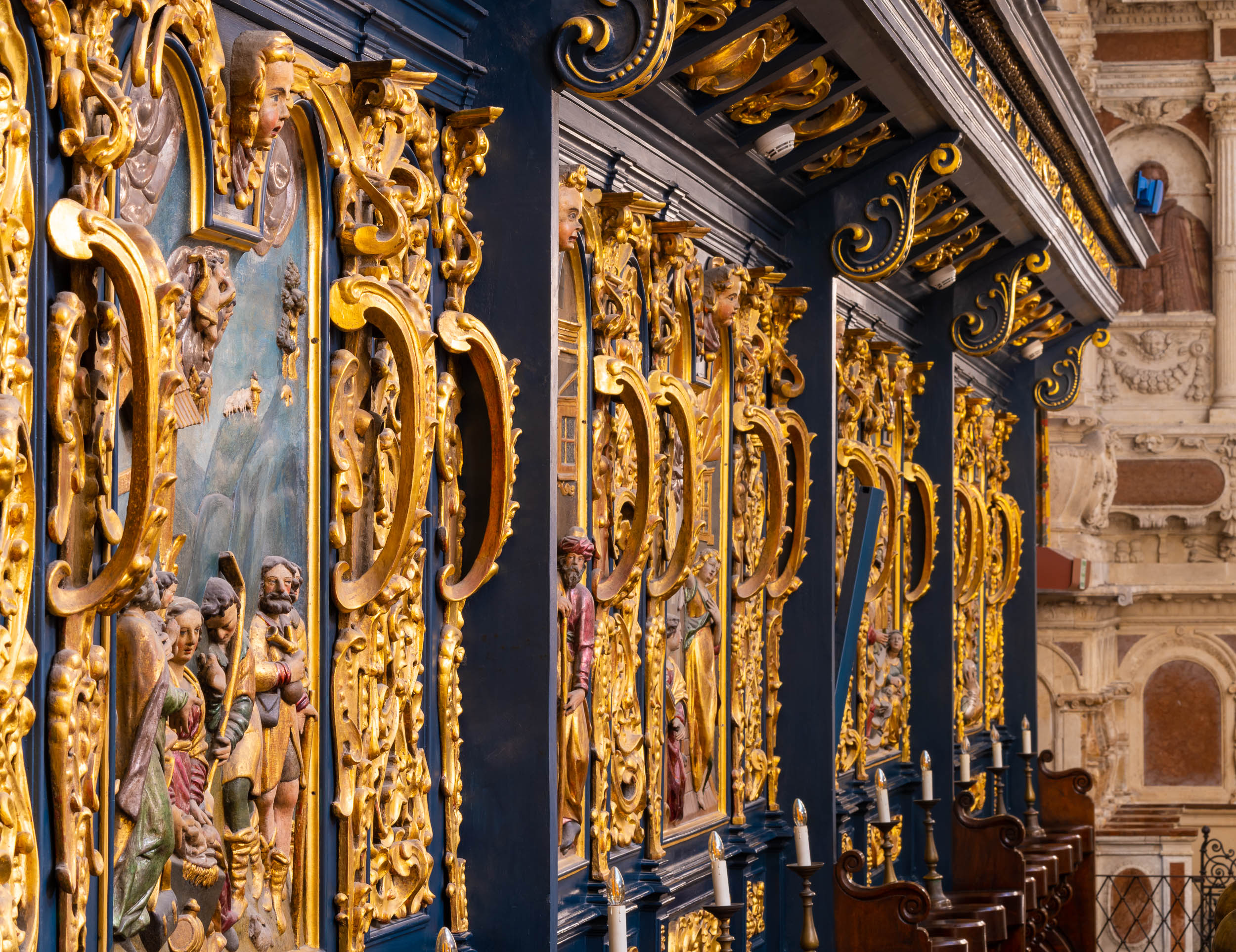
Stall backrests
- Subject
- Zaplecki stall ze scenami z życia Maryi
- Contributor
- -
- Style
- Renesans
- Date
- 1635-1637
- Type
- Płaskorzeźba
- Material and technique
- Drewno/Rzeźbienie, polichromowanie, złocenie
- Size
- Brak danych
- Signatures and inscriptions
- -
- Identity number
- -
- Department
- -
- Links/analogies
- -
- Owner
- Bazylika Mariacka w Krakowie
- Copyright
- Bazylika Mariacka w Krakowie
- Location
- Prezbiterium, ściana północna i południowa
- Description
- The backs of the stalls were made in 1635-1637 by Fabian Möller, a Danzig-based woodcarver-ebenist. They are composed of two-arched niches filled with relief scenes, and the individual niches are divided by ornamental decoration. In accordance with the rules of the time, Möller used ready-made iconographic models, which were prints by Northern masters from the late 16th and 17th centuries. The backrests were restored in 1894 from the foundation of Prince Konstantin Radziwill, and the painting and gilding work was carried out by Wit Wisz. Subsequent restorations took place in the years: 1948, 1949, 1957; the last one, completed in 1999, restored the colour scheme as close as possible to the original. The elaborate programme of reliefs in the backrests depicts Mary's role in the history of salvation, thus fitting in with the church's ideological programme. The scenes are now arranged chronologically. The life of Mary and the story of Jesus related to her can be traced by contemplating them starting from the scene furthest from the altar on the right, depicting the genealogical Tree of Jesse, to the final scene of the cycle, the relief of Our Lady opposite, among the symbols of the Litany of Loretto. On the south side there are representations of: Tree of Jesse, Birth of Mary, Presentation of Mary, Marriage to St Joseph, Annunciation, Visitation of St Elizabeth and Christmas. On the north side: The Circumcision, the Homage of the Three Kings, the Presentation of Jesus in the Temple, the Farewell to the Mother, the Risen Christ appearing to the Mother of God, the Assumption of the Mother of God, the Coronation of Mary and Mary and the Child surrounded by symbols from the Litany of Loretto.